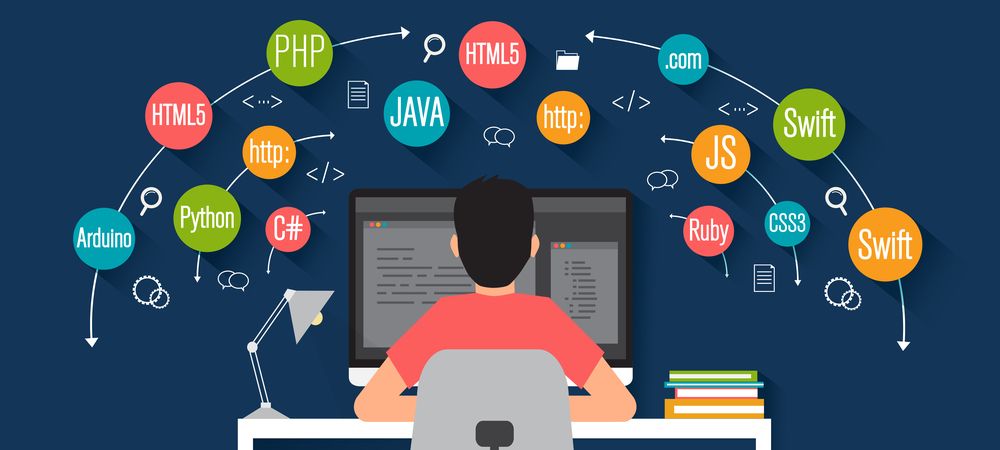As we venture deeper into the digital age, the landscape of Information Technology (IT) continues to evolve at an unprecedented pace. Staying abreast of the latest trends is not just beneficial but essential for businesses and professionals aiming to maintain a competitive edge. This comprehensive guide delves into the key IT trends poised to shape 2025, offering insights into emerging technologies, cybersecurity advancements, cloud computing innovations, and more.

Introduction: Why Keeping Up with IT Trends is Crucial
In the rapidly changing world of technology, staying updated with the latest IT trends is vital for several reasons:
- Competitive Advantage: Understanding and implementing new technologies can set businesses apart from competitors.
- Efficiency and Productivity: Emerging tools and solutions often lead to more efficient workflows and higher productivity.
- Security Enhancements: New trends often come with improved security measures to combat evolving threats.
- Customer Satisfaction: Leveraging the latest technologies can enhance user experiences and satisfaction.
In 2025, several IT trends are expected to dominate the landscape, influencing how organizations operate and innovate.
Emerging Technologies: AI, Blockchain, Quantum Computing, and More
The foundation of IT evolution lies in the continuous development of cutting-edge technologies. Here are some of the most impactful emerging technologies for 2025:
1. Artificial Intelligence (AI) and Machine Learning (ML)
AI and ML continue to advance, becoming more integrated into various sectors. From predictive analytics to autonomous systems, their applications are expanding rapidly.
- AI-Powered Automation: Streamlining processes across industries, reducing human error, and increasing efficiency.
- Natural Language Processing (NLP): Enhancing human-computer interactions through more intuitive communication methods.
- AI Ethics: Developing frameworks to ensure responsible and unbiased AI deployment.
2. Blockchain Technology
Beyond cryptocurrencies, blockchain is finding its place in various applications:
- Supply Chain Management: Ensuring transparency and traceability from origin to consumer.
- Smart Contracts: Automating agreements with self-executing contracts.
- Decentralized Finance (DeFi): Transforming traditional financial systems with decentralized solutions.
3. Quantum Computing
Quantum computing promises to solve complex problems beyond the reach of classical computers:
- Advanced Simulations: Revolutionizing fields like materials science and pharmaceuticals.
- Cryptography: Developing new encryption methods to enhance security.
- Optimization Problems: Solving logistical and operational challenges with unprecedented speed.
4. Internet of Things (IoT) and Edge Computing
The proliferation of connected devices is driving advancements in IoT and edge computing:
- Smart Cities: Enhancing urban infrastructure with interconnected systems for better management.
- Industrial IoT: Optimizing manufacturing processes through real-time data analysis.
- Edge AI: Processing data closer to the source to reduce latency and improve efficiency.
Cybersecurity Evolution: Threats and Solutions in 2025
As technology advances, so do the tactics of cybercriminals. The cybersecurity landscape in 2025 will be shaped by both sophisticated threats and innovative defense mechanisms:
1. Advanced Persistent Threats (APTs)
APTs will become more targeted and stealthy, aiming to breach high-value targets over extended periods.
- Behavioral Analysis: Utilizing AI to detect unusual patterns indicative of APTs.
- Zero Trust Architecture: Implementing strict access controls to minimize potential breach points.
2. Ransomware Evolution
Ransomware attacks will become more complex, targeting not just data but also operational processes:
- Double Extortion: Demanding ransom not only for data decryption but also to prevent data leaks.
- AI-Driven Defense: Leveraging machine learning to predict and mitigate ransomware attacks proactively.
3. Quantum-Resistant Encryption
With the rise of quantum computing, existing encryption methods may become vulnerable:
- Post-Quantum Cryptography: Developing encryption algorithms that can withstand quantum attacks.
- Hybrid Encryption Models: Combining classical and quantum-resistant algorithms for enhanced security.
4. Automated Threat Detection
Automation will play a crucial role in identifying and responding to threats in real-time:
- Security Orchestration: Integrating various security tools for coordinated threat response.
- AI-Powered SIEM: Enhancing Security Information and Event Management systems with AI capabilities.
Cloud Computing: Predictions for the Next Wave of Cloud Innovation
Cloud computing remains a cornerstone of modern IT infrastructure. In 2025, several trends are set to redefine how businesses utilize the cloud:
1. Multi-Cloud and Hybrid Cloud Strategies
Organizations will increasingly adopt multi-cloud and hybrid cloud approaches to leverage the strengths of different providers:
- Flexibility: Balancing workloads across multiple cloud environments for optimal performance.
- Cost Optimization: Reducing costs by selecting the most cost-effective services from various providers.
2. Serverless Computing
Serverless architectures will gain prominence, allowing developers to build and deploy applications without managing server infrastructure:
- Scalability: Automatically scaling applications based on demand.
- Cost Efficiency: Paying only for the compute resources consumed during execution.
3. Edge Cloud Integration
Combining edge computing with cloud services will enhance data processing capabilities:
- Reduced Latency: Processing data closer to the source for faster response times.
- Improved Reliability: Ensuring continuous operation even during network disruptions.
4. Enhanced Cloud Security
As cloud adoption grows, so does the focus on securing cloud environments:
- Zero Trust Security Models: Implementing strict verification for every access request.
- Advanced Encryption: Protecting data at rest and in transit with robust encryption methods.
Conclusion: Preparing for the Future of IT
The IT landscape in 2025 promises significant advancements and challenges. To thrive in this dynamic environment, businesses and individuals must proactively adapt to emerging trends:
- Continuous Learning: Staying informed about the latest technologies and best practices.
- Investing in Innovation: Allocating resources to explore and implement new solutions.
- Emphasizing Security: Prioritizing cybersecurity measures to protect assets and data.
- Adopting Flexible Strategies: Embracing multi-cloud and hybrid approaches to enhance resilience and performance.
By understanding and embracing these IT trends, organizations and professionals can navigate the future with confidence, driving progress and achieving sustained success.
Explore Further
We'd Love Your Feedback!
If you have any thoughts, questions, or suggestions about this article, feel free to share them below.